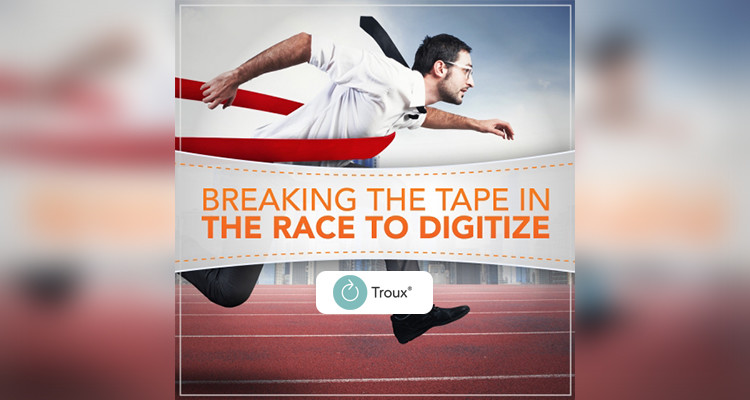
In today’s global, hyper-competitive economy, you’re seeing all kinds of heated races to be the first to digitize an industry. You’ve got Uber battling Lyft to digitize (and displace) the traditional taxi industry. Apple, Google, PayPal, Square and others are slugging it out in a race to digitize the majority of retail transactions. Even seemingly mundane industries like shipping and storage – with Austin tech comrades uShip and SpareFoot racing incumbent competitors – heat up when digitization starts making things more efficient and accessible. And this makes the stakes quite high in the IT world, as enterprises leverage IT as they engage in a similar race to innovate digitally.
Call it what you will – digital transformation, digital revolution, digitization – but the C-suite recognizes a game-changing market disruption is underway. It’s a disruption that requires them to revamp their business model and determine how to deliver a sustainable competitive advantage. At its core, it’s a strategic imperative that C-suite decision makers of all types have to take seriously. According to a recent Gartner report titled “Digital Business Requires CIOs, CEOs and Strategy Officers to Improve Technology-Related Competitor Intelligence,” digital business is now competitive turf that differentiates between companies’ health, efficiency and product sets. We wholeheartedly concur with that.
The Gartner report encourages business leaders to look at their competitive landscape and evaluate where they stack up (no pun intended) in IT infrastructure, processes and advancement when it comes to emerging areas like the cloud, BYOD, data analysis and cybersecurity. The role of the CIO in this process and analysis is also made crystal clear:
“Discuss the traditional competitor landscape, so you know and agree where its natural boundaries lie. Then frame a new view of competition to include startups, entrants from adjacent industries and attack from the tech sector itself…If there is corporate myopia, the CIO must be an agitator, ensuring that the analysis of competition extends beyond traditional competitors and industries.”
That’s a pretty weighty role for the CIO to play; they’re continuing to be relied upon as a business leader, not just an advisor or even worse an IT “utility provider.” And while we know that CIOs and their teams of IT decision makers are eager to innovate for the business and meet competitive challenges head-on, there may be a step missing here. How does a CIO (and their traditional business strategist counterpart) decide how the company compares to the competition if they don’t holistically understand where gaps exist in their own journey toward becoming a digital business? What areas need investment and how can they prioritize the changes that need to be executed? In other words, how can you compare your house to others’ when you don’t have yours cleaned up and in order or don’t even completely know what the blueprint looks like? To nail down improvements to the digital business and lead or follow fast in the industry, CIOs need to employ enterprise intelligence (EI).
Enterprise intelligence is complete, fast, prescriptive and (perhaps most importantly) real-time, all of which are key characteristics for CIOs as they use EI to do their benchmarking and strategic planning. Joe McKendrick recently covered the broader EA discipline for ZDNet, and a quote from McKinsey’s Oliver Bossert, Chris Ip and Jürgen Laartz does a good job of setting up the pressures related to digital business that enterprise intelligence can help alleviate:
“While most companies would have been comfortable in the past going through a three- to five-year transformation and not implementing new features in the meantime, today’s highly competitive markets no longer allow players to alter architecture and business models sequentially. It is therefore important to realize that the transformation toward digital is a continuous process of delivering new functionality.”
The McKinsey trio also does a standout job of breaking down “two-speed IT architecture,” which addresses the two prongs of customer-centric front-end IT (apps, UIs, etc.) and the legacy systems IT back-end (compute resources, storage, etc.), both integral competitive fronts in digital business. Fortunately, enterprise intelligence can help CIOs, CEOs, COOs, CFOs and other strategy officers understand where they stand from both angles, appropriately relate their progress to that of the competition, and ultimately break the tape in the race to digital prowess and a better, sustainable competitive advantage.
Learn more at Planview.com.

![Establishing an Enterprise Architecture-to-Business Communication Framework [Infographic]](https://blog.planview.com/wp-content/uploads/2017/11/Establishing-an-Enterprise-Architecture-to-Business-Communication-Framework-Infographic_750x400.jpg)


